One Pillar Pagoda, also known as Dien Huu Pagoda, is not just an ancient temple but also a thousand-year-old cultural and historical symbol of Hanoi. With its unique architecture, considered one of the most distinctive in Asia, One Pillar Pagoda resembles a lotus flower rising from the water, carrying mystical stories and profound spiritual values. When visiting Hanoi, tourists should not miss the opportunity to admire this architectural masterpiece, listen to historical tales, and feel the serenity amidst the bustling capital. Let’s explore the fascinating aspects of this special pagoda!
Discovering One Pillar Pagoda: Location, Best Time to Visit, and Entrance Fee
Prime Location of One Pillar Pagoda
One Pillar Pagoda is located in a very special location, behind Ong Ich Khiem Street, nestled within a park in Doi Can ward, Ba Dinh district, Hanoi. This location is not only convenient for transportation but also provides the pagoda with a peaceful space, separate from the hustle and bustle of the city. It is considered one of the oldest historical and cultural relics, a source of pride, and an indispensable symbol of thousand-year-old Hanoi. Besides the name One Pillar Pagoda, it is also known as Dien Huu Tu or Lien Hoa Dai, each name associated with its own stories and meanings.

Best Time to Visit the Pagoda
Visitors can visit One Pillar Pagoda at any time of the year. However, the best time to visit this pagoda is in the summer, especially on the 1st or 15th of the lunar month. In the summer, Linh Chieu Lake surrounding the pagoda is covered with blooming lotus flowers, creating an extremely peaceful and poetic scene. The faint scent of lotus further enhances the beauty of Lien Hoa Dai, creating a sacred and relaxing space. Additionally, on the full moon and first days of the month, visitors have the opportunity to immerse themselves in the spiritual atmosphere of the Vietnamese people, praying for peace for themselves and their families.
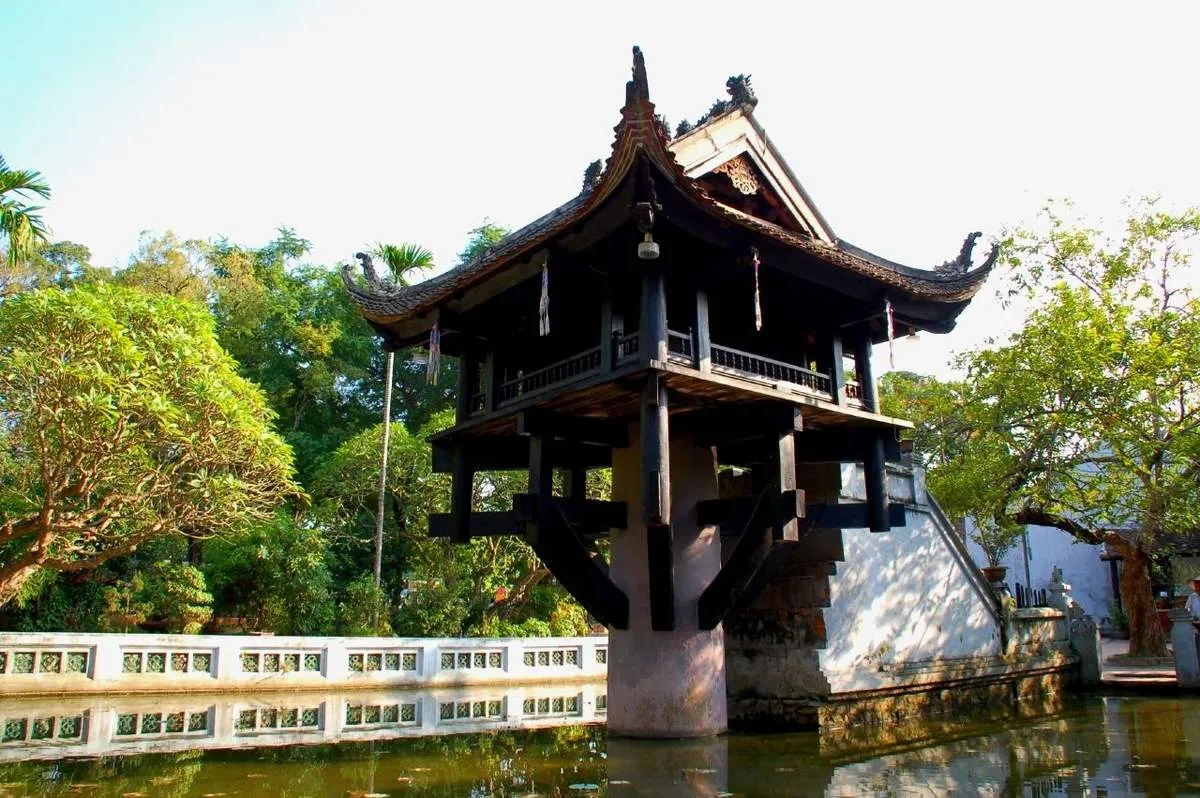
Opening Hours and Entrance Fee Information
- Opening hours: 7:00 AM – 6:00 PM (Ideal visiting time is 1-3 hours)
- Entrance fee (approximate):
- Vietnamese citizens: Free
- Foreigners: 25,000 VND/person/visit
History and Unique Architecture of One Pillar Pagoda
Historical Legend of the Pagoda’s Origin
One Pillar Pagoda is not only famous for its unique architecture but also associated with a meaningful historical legend. According to historical records, King Ly Thai Tong (1028-1054) dreamed of seeing Bodhisattva Avalokiteśvara (Quan Am) sitting on a lotus throne, leading the king onto a platform. Upon waking, the king recounted the story to his court officials, and the monk Thien Tue advised him to build a pagoda according to the dream.
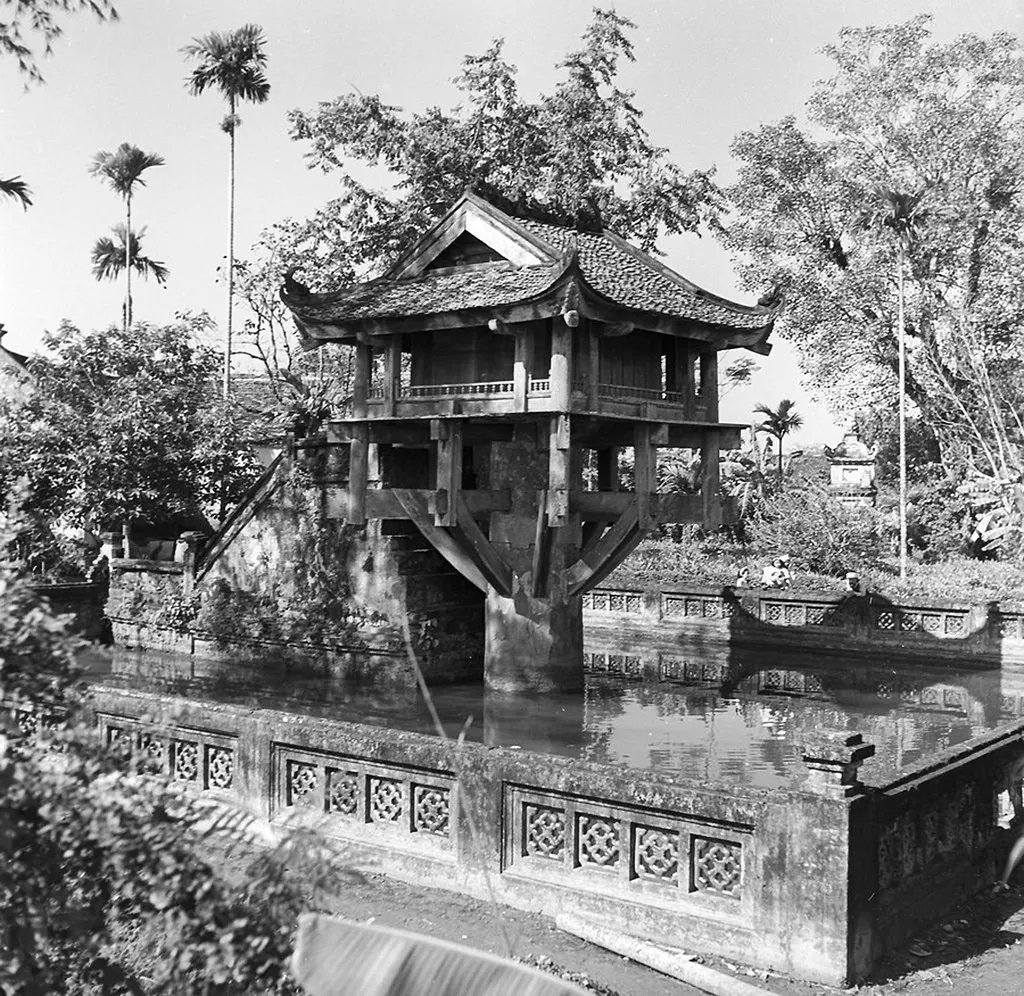
In 1049, King Ly Thai Tong ordered the construction of Dien Huu Pagoda (prolonging blessings) with a single stone pillar, on which a wooden lotus platform was erected to worship Bodhisattva Avalokiteśvara. The pagoda was built with the purpose of praying for a son, as King Ly Thai Tong had no male heir at the time. After the pagoda was built, the king had a son, further increasing the sacredness and faith in the pagoda.
Throughout many dynasties and historical events, One Pillar Pagoda has been restored and renovated numerous times. Notably, after being destroyed by the French army in 1954, the pagoda was rebuilt in 1955, preserving its original unique architecture.
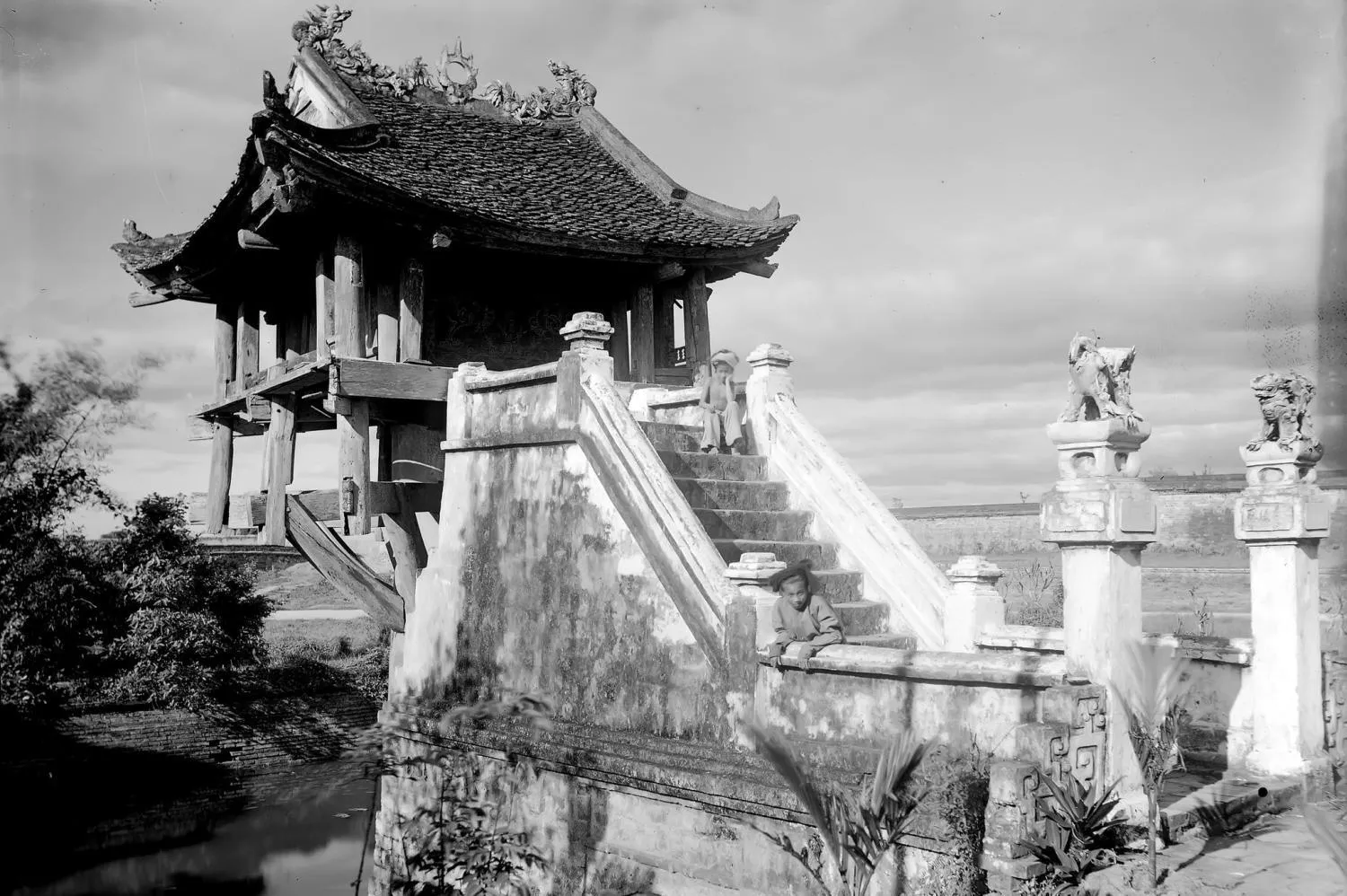
Unique and Unparalleled Architecture of One Pillar Pagoda
One Pillar Pagoda is considered one of the most unique architectural works not only in Vietnam but also worldwide. The pagoda has a square architecture, built on a single stone pillar 4 meters high (excluding the submerged part). This stone pillar symbolizes a lotus flower rising from the water, representing the purity and essence of Buddhism.
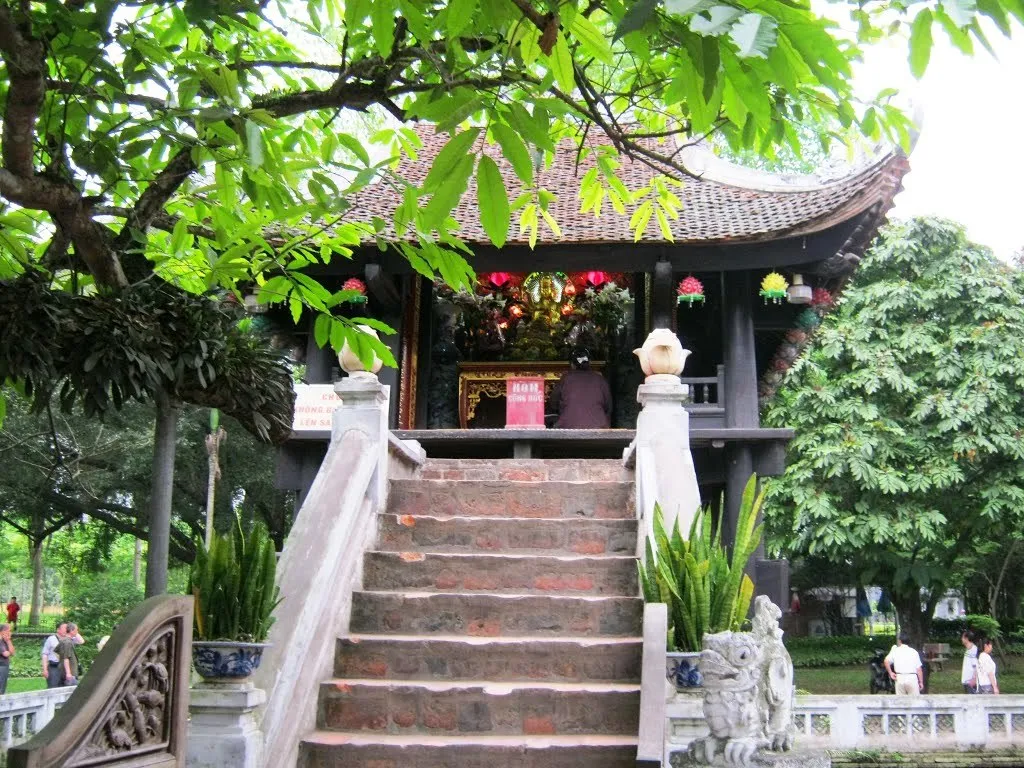
Above the stone pillar is a system of wooden supports, forming a solid frame for the pagoda. The roof is tiled with red tiles, with curved corners, creating a graceful and elegant beauty. Inside the pagoda, a statue of Bodhisattva Avalokiteśvara is worshiped on a lotus pedestal, symbolizing the compassion and salvation of Buddhist Dharma.
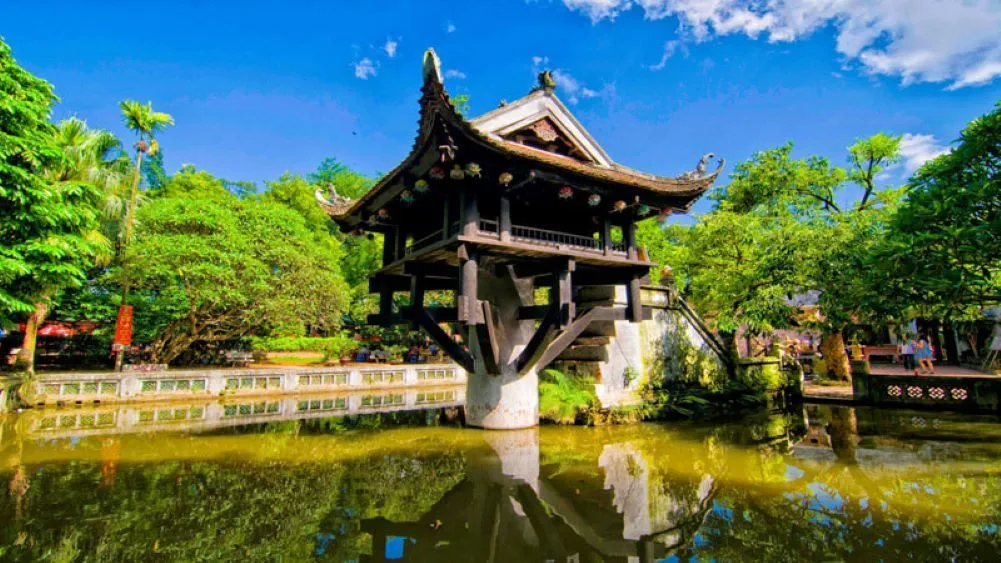
One Pillar Pagoda: Symbol of Culture and Faith
Symbol of Thousand-Year-Old Hanoi
One Pillar Pagoda is not only a unique architectural work but also a cultural and historical symbol of Hanoi. The image of the pagoda has become familiar to Vietnamese people and international visitors, appearing in many publications, paintings, and souvenirs.
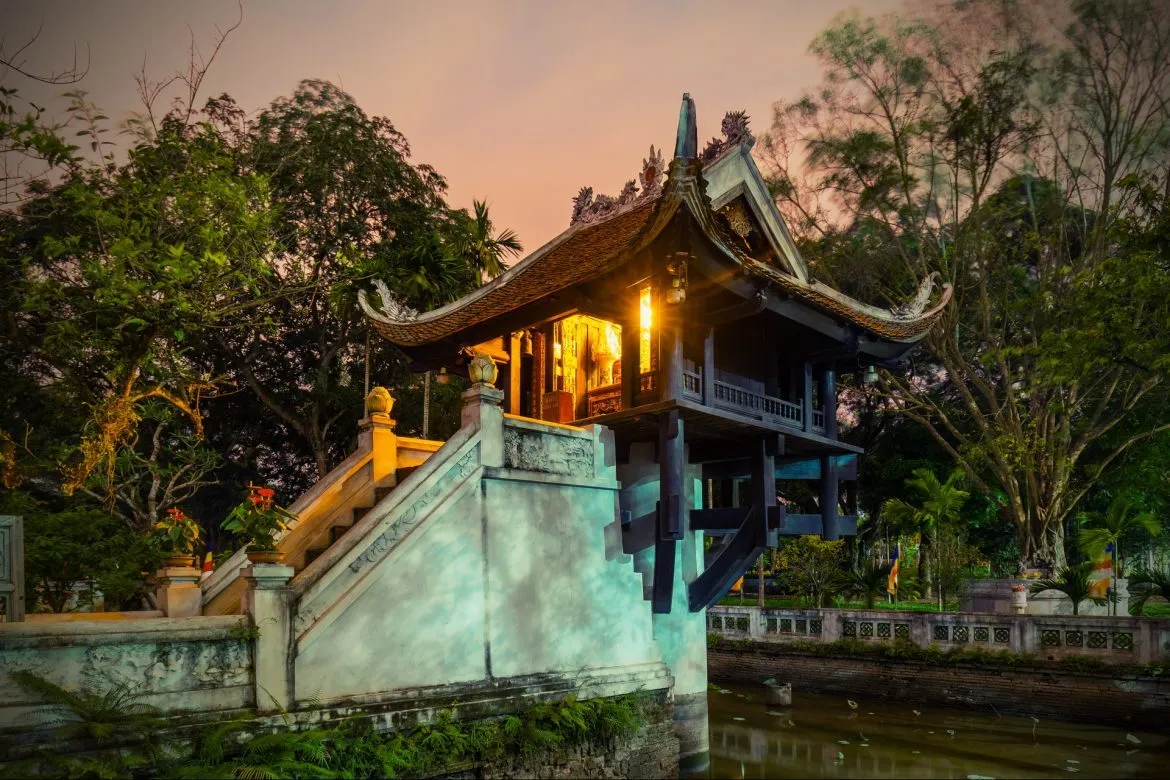
One Pillar Pagoda is not only an attractive tourist destination but also an important spiritual site, where people come to pray and seek peace of mind.
Other Special Features at One Pillar Pagoda
In addition to its unique architecture and long history, One Pillar Pagoda has many other special features that attract visitors:
- Tam Quan Gate: The Tam Quan Gate is a traditional Vietnamese architectural structure, commonly built at temples and communal houses. The Tam Quan Gate of One Pillar Pagoda is beautifully designed and serves as the main entrance for visitors.
- Shrine: Besides Lien Hoa Dai, there is also a shrine in the pagoda’s grounds, serving the chanting and worshiping needs of monks, nuns, and Buddhists.
- Bodhi Tree: The Bodhi tree in the pagoda’s grounds is a gift from the President of India to Vietnam in 1958. This Bodhi tree is over 60 years old, with lush, green foliage, creating a peaceful and sacred space.
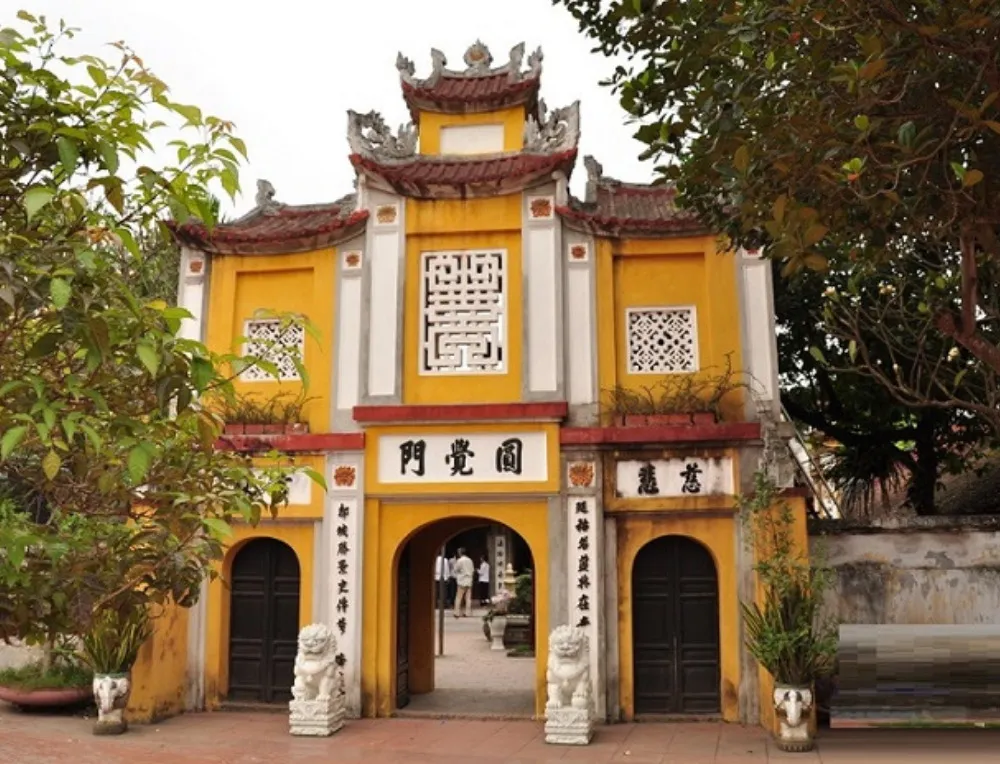
- Visitor Support Services: One Pillar Pagoda offers many convenient services for visitors, including drinking water, snacks, rest stops, ritual offering services, and incense offering. Additionally, visitors can purchase Buddhist souvenirs here.
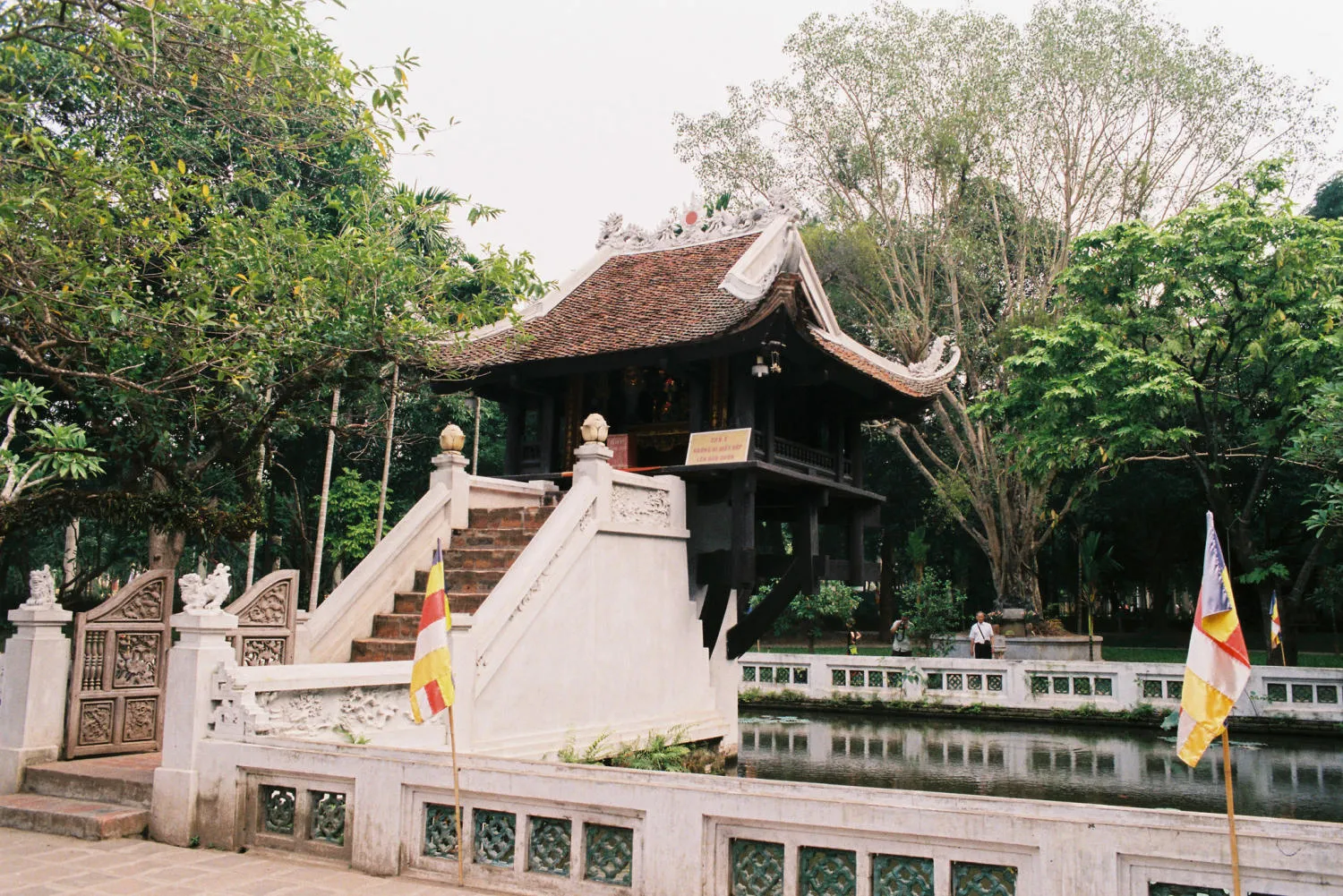
Conclusion
One Pillar Pagoda is a must-visit destination when in Hanoi. The pagoda is not only a unique architectural work but also a cultural, historical, and religious symbol of Vietnam. Visiting One Pillar Pagoda, tourists will have the opportunity to admire its unique architectural beauty, learn about its long history, and feel the serenity in their souls. We hope that the information in this article will help you have a meaningful and memorable visit to One Pillar Pagoda.
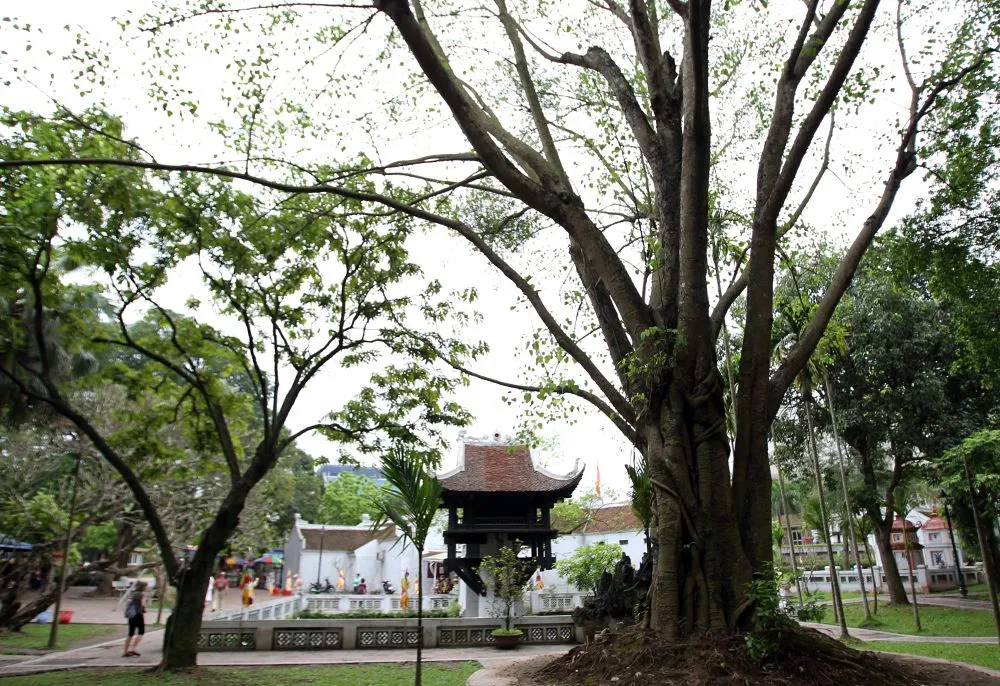
Before leaving Hanoi, don’t forget to visit Hoan Kiem Lake, another symbol of the capital, to fully experience the beauty of thousand-year-old Hanoi.